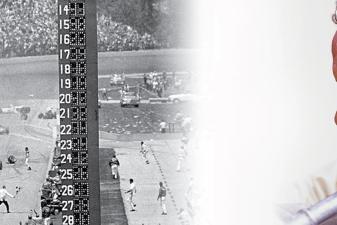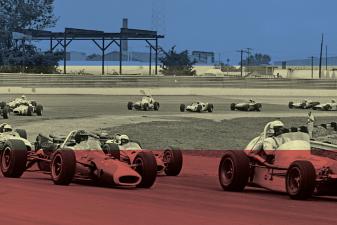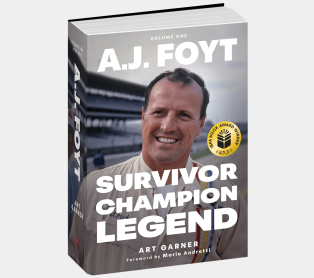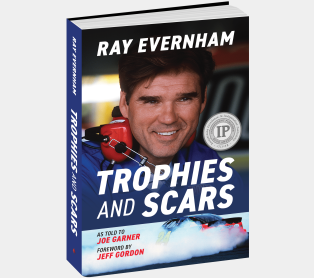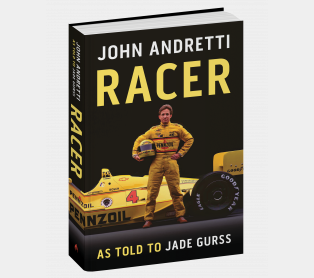Furriners, Funny Cars, and Firestone Tires

The following is an excerpt from A.J. Foyt: Volume 1 by Art Garner. Anthony Joseph “A.J.” Foyt Jr. is one of the greatest race car drivers in history—some would argue the best—and he has the statistics to back it up. Numbers alone can’t begin to tell Foyt’s story. Through tireless research and extensive interviews with the biggest names in motorsports, author Art Garner has compiled an unprecedented look at the life and career of one of America’s most popular sports heroes. In this excerpt read about how rear-engine cars started changing the racing landscape of the 1960s.
No sooner had the opening ceremonies been completed and the Indianapolis Motor Speedway opened for practice on May 1, 1963, than a group of unhappy team owners, drivers, and mechanics gathered in Gasoline Alley. Their target wasn’t the new rear-engine “funny cars” or engine supplier Ford Motor Company, even though those new challengers threatened to make millions of dollars of the owners’ investments obsolete.
They converged on the Firestone office complaining about smaller, wider, and softer tires being supplied to the rear-engine teams. Even though a Lotus had yet to take the track in May, the others knew about the speeds turned during testing and said the new tires provided a distinct advantage over the narrow and harder eighteen-inch tires the roadsters had been using for years. A petition circulated saying the undersigned would not compete in the race unless the tires were shared with everyone or withdrawn.
In an attempt to deflect the complaints, Firestone said it developed different types of tires for different types of cars, just as it did for passenger vehicles, and smaller tires were made for lighter-weight cars. The company had a point: The Lotus-Fords were at least three hundred pounds lighter than the average roadster. Adding insult to injury, Firestone agreed to provide the tires to Smokey Yunick, who had developed a new “lightweight” roadster.
“We have no intention of withdrawing the fifteen-inch tire,” the company said in a statement. “It was our obligation to meet the requirements of these smaller cars who had requested small tires. Firestone feels that all tires in this year’s race will be the best ever in performance in any of our experience in thirty-five years.”
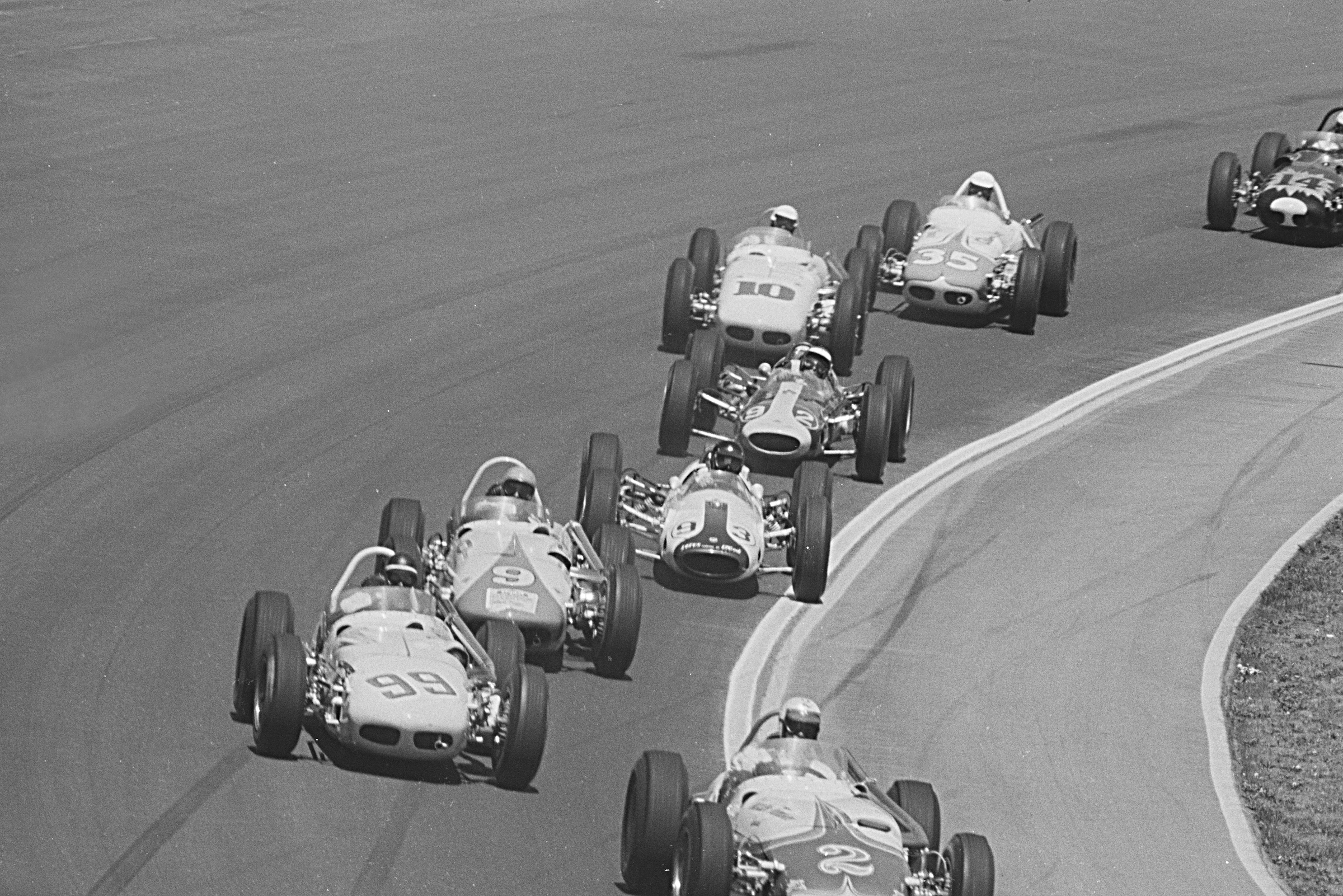
As soon as the Lotus-Fords took the track and the faster they went, the louder the complaints. Fans turned out in record numbers to see the new cars and high speeds. In addition, the Fords were running on gasoline rather than the traditional methanol and would need to make only two pits stops, compared to a minimum of three for the roadsters.
Frustrated by all the talk and no action, Foyt flew to Langhorne for the 150-mile stock car race. He set a track record in qualifying and won by more than two laps, breaking a record set by Roberts in 1957. Even though the event took four hours to run, a cocky Foyt nodded when asked if it was as easy as it looked.
“Probably the easiest race I’ve ever won,” he said. “I was running at half to three-quarters throttle all day.”
It was already his fifth victory of the year driving three different types of cars on four different types of tracks—paved, dirt, road courses, and ovals. Despite the length of the race and plans to fly back to Indianapolis as soon as it was over, he lingered after, talking to reporters, signing autographs for all comers, and surprising those who’d heard Foyt could be brusque and his signature hard to come by.
“He had to be tired,” noted one reporter, “but he took time to autograph every piece of paper thrust at him by admiring fans.”
Back in Indianapolis, Foyt went to the recently opened ninety-six-room Speedway Motel, where he and Lucy were staying. Lucy and Mari Hulman George would go horseback riding nearly every morning before going to the track. The three children were at home with the grandparents—Tony now seven, Terry, four, and Jerry, eight months.
The next day at the Speedway, Foyt decided to take matters into his own hands, saying Firestone was favoring the “little shitboxes” and “kowtowing to a bunch of foreigners,” or “furriners” as he called them. He believed the Firestone moves were personal, in retaliation for his running Goodyear tires in NASCAR. He called Goodyear’s offices in Akron, Ohio.
“When it comes down to it, I’m as loyal as the next guy,” Foyt would say.
“When it’s deserved. Firestone hadn’t really done anything for me, personally. I mean, nothing they hadn’t done for Indy racers in general. So when they turned around and gave them other guys special tires, that was too much. It was time for me to switch to Brand X.”
The next day a Goodyear truck rolled into Gasoline Alley for the first time since Tommy Milton won the race on its tires in 1921. The truck was loaded with the same tires used in the stock car races at Daytona and Atlanta and accompanied by a phalanx of Goodyear engineers. Foyt made a big show for photographers of helping mount tires on his car and insisted on running practice laps, despite gusting winds keeping most cars parked for the day.
“It felt like a tornado, it picks the whole car up and moves it over,” he said, although he still turned his fastest laps of the month. “So far, so good. The tire wear looks real good now. We’ll have to run them at higher speeds to learn more.”
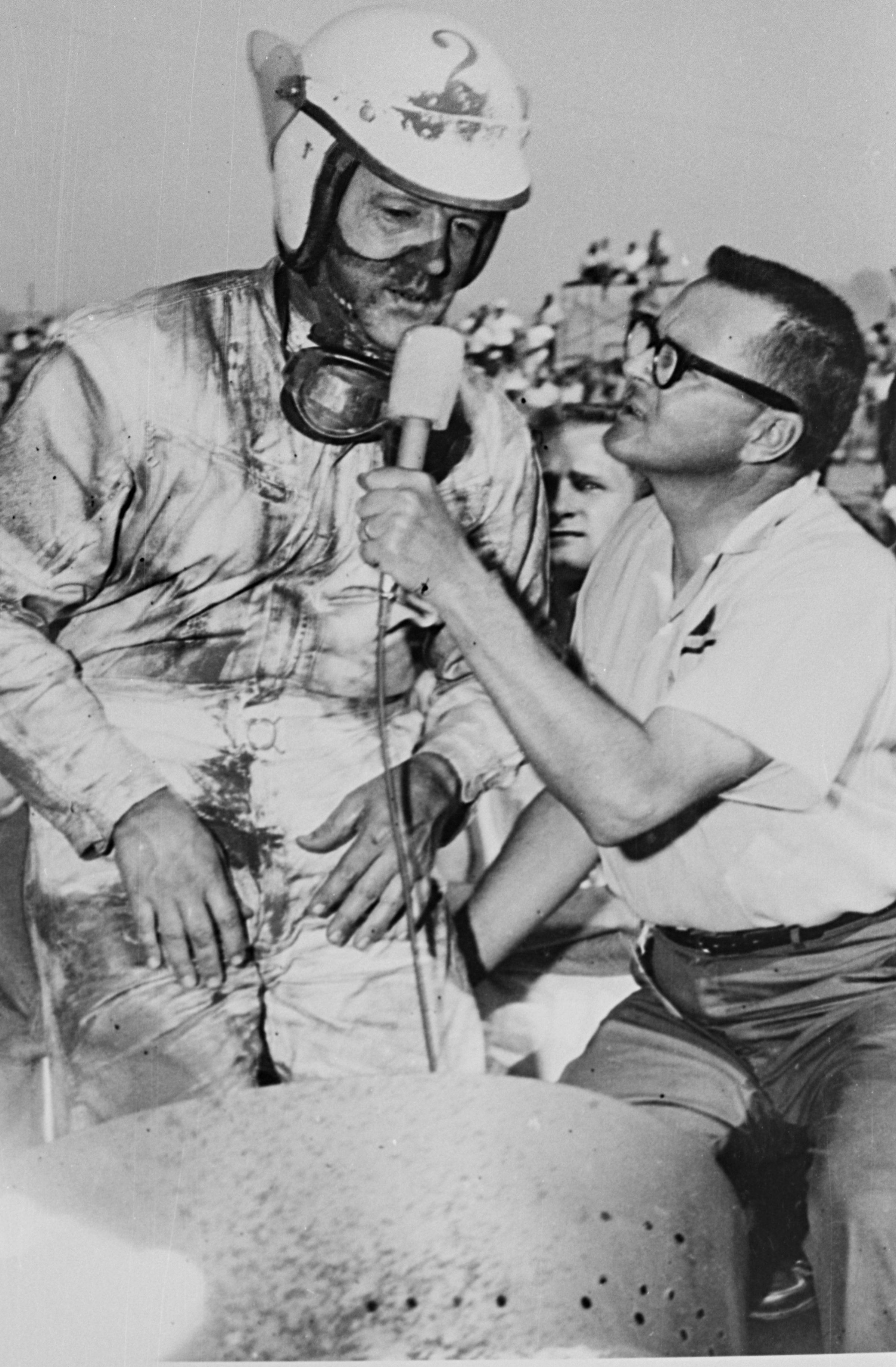
With the appearance of the Goodyear tires and threats of legal action, it wasn’t long before the fifteen-inch Firestones magically appeared in the garages of other teams. Jones took to the track and turned an unofficial lap of more than 152 mph, the fastest ever run at the Speedway.
Eleven of the sixty-six entries were rear-engine, including three Lotus-Fords. In a somewhat surprising move, the Ruby team elected not to enter the Lotus that ran so well at Trenton, sticking with a proven roadster instead. Novi-powered cars also were back at the Speedway for the first time in four years, revitalized by Andy Granatelli and with Hurtubise signed as the driver. Eight new Watson roadsters were spread throughout Gasoline Alley.
Foyt had a pair of cars to choose from, the new Watson and the three-year old Trevis, both with stunning new Dean Jefferies paint jobs and wearing No. 2. To avoid the conflicts of the year before, George Bignotti agreed to work solely on the team cars and A.J. was the only listed driver. The cars were called Sheraton-Thompson Specials, a nod to the hotel chain being a more consumer-friendly connection.
Several NASCAR drivers were on hand to take their driver tests, including Johnson, White, Tiny Lund, and Curtis Turner. Johnson, whose car was fitted with a roll cage similar to his stock car, left after running the 120 mph first stage of his rookie test. “These cars go too fast for me,” he said. “There is too much wind in your face here.”
“I wasn’t exactly what you’d call afraid,” said Johnson, one of NASCAR’s toughest drivers, after qualifying on the pole later in the week for the Charlotte World 600. “But I’ll tell you one thing, if I get in something I’m scared of—I get away from it. Those Indy drivers—Jones, A.J. Foyt, and them—they’re a nice bunch of guys. I don’t think they’re crazy because they drive there. It’s their type [of] racing. That’s what they started on and to them it’s no more [dangerous] than stock car racing is to us. But I wouldn’t drive there under any circumstances. It’s definitely real dangerous.”
It didn’t take long for Foyt and the Goodyear engineers to realize the stock car tires weren’t right for the Speedway and announce development work would begin immediately on a tire for 1964. Foyt went back to using Firestones but wore his Goodyear hat for the rest of the month. He also settled on qualifying the Trevis, based on “pure sentiment.”


